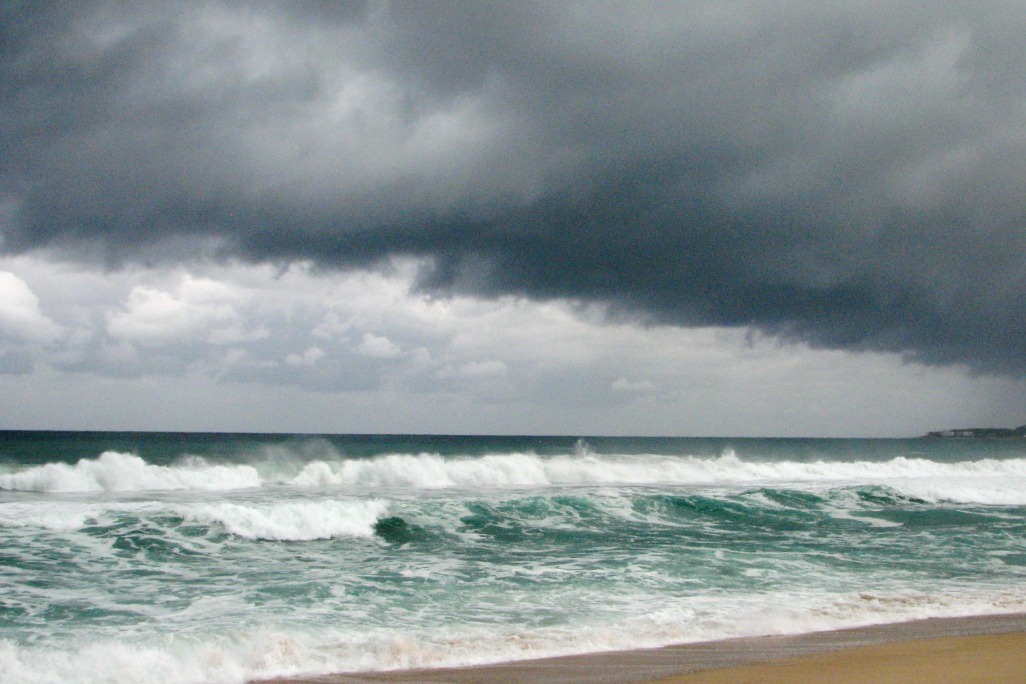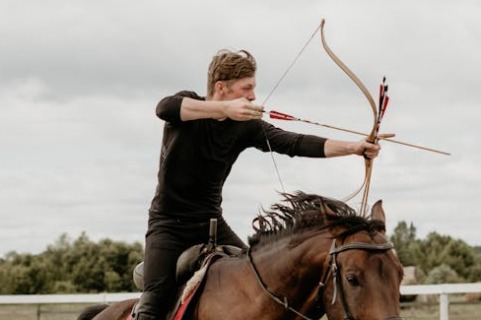Glacial pace? 龟速
中国日报网 2021-06-08 12:42

Reader question:
Please explain “glacial pace”, as in this sentence: At the beginning of the year, the vaccine rollout was moving at a glacial pace.
My comments:
To paraphrase, it took a lot of time for people to get the vaccine at the beginning of the year, and very few people got it.
Glacial pace means something is happening slowly, extremely so.
Pace refers to the speed at which someone or something is moving. She walks at a brisk pace, for example.
Or, farmers in the countryside live at a slower pace and prefer it that way.
Or, for old people, society is perhaps changing too fast, but not for young people – many young people are not satisfied with the pace of change.
The pace of change?
Yeah, that’s the speed at which change is happening.
Which leads us to glacial pace, glacial being descriptive of glaciers. Glaciers, of course, are the huge mountains of ice formed by the accumulation of snow. Glaciers have been there for millions of years. We understand that glaciers move, although not in a way that’s visible to the human eye.
In fact, we understand that glaciers not only move but contribute to the formation of the current landscape – just that they are moving slowly, so slowly that we may not detect any of it during our life time.
But in geological terms, over millions and millions of years, glacial movements have brought sea changes, so to speak.
Sea changes?
Well, a sea change is some huge, profound and notable change that’s happening over millions of years, transforming mountains into seas and seas into mountains.
But, like I said, sea changes are not happening overnight. This type of change happens over eons of time and we do not notice it.
Eons of time?
Eon represents a long, long period of time. In fact, it’s the longest period of time geologists use to describe time and change.
All right, here are media examples of situations where something is happening at a glacial pace, the speed at which glaciers move, i.e. very, very, very slowly:
1. The Arctic is warming and changing rapidly, with record or near-record conditions documented across the region in 2020. That’s according to an international team of 133 researchers from over a dozen countries who contributed to the 15th annual NOAA Arctic Report Card, released on Tuesday.
The report is a comprehensive year-in-review of Arctic conditions — what NOAA calls vital signs — that characterize the health and stability of the Arctic ecosystem. They include variables like air temperature, sea ice and wildland fires. While climate conditions in this frigid part of the world typically change naturally at a glacial pace, in recent years the transformation has been occurring at a breakneck speed.
In the a video accompanying the report, NOAA says there have been “alarming rates of change observed” since the 2006 Arctic Report Card, and adds, “the rate of change has been extraordinary.”
This is evidenced by the intense heat and wildfires in Siberia this summer. It’s not often that events deep in rural Arctic territory make headlines around the world, but in late June, for the first time on record, the temperature soared past the 100-degree Fahrenheit mark above the Arctic Circle, in a town called Verkhoyansk. That was part of a several months long heat event which climate scientists said was made 600 times more likely by human-caused climate change.
From October 2019 to September 2020, Arctic surface temperatures were the second warmest on record — almost 2 degrees Celsius (3.6 degrees Fahrenheit) above the 1980-2010 normal average — behind only 2016, a year affected by a very strong global El Niño event.
- “Alarming” and “extraordinary” rate of change as the Arctic warms, NOAA report says, CBSNews.com, December 9, 2020.
2. New York Governor Andrew Cuomo sure is full of himself. The man overseeing the state with the second-worst rate of coronavirus deaths — about twice as bad as Florida — recently published a book boasting about his response to the pandemic, right before the virus got completely out of control in his state, again. Whereas nearby Philadelphia has got its numbers at least trending in the right direction over the last month, with a decline of about half since November, in New York City they have continued to increase steadily since October.
Now that the vaccine is available, Cuomo is making another entirely characteristic mess of things. He is not only meddling with every aspect of distribution, but is so hideously incompetent that shots are getting administered at a glacial pace. It’s just what he does.
Long before the coronavirus pandemic began, New York state had a carefully-crafted mass vaccination plan, developed in part with federal grants, which was centered around county public health departments and had been practiced regularly for years. But since the coronavirus vaccine has been approved, Cuomo has seized control of the process without explanation, ignored the plan, and is running distribution through hospitals.
Cuomo is so possessed by conservative desertist ideology, the idea that government benefits should only be allocated to people who deserve them, that until recently hospitals were supposed to use a Byzantine "matrix" to determine precisely who needs shots the most. The New York Times reports: “The state had advised clinics and other facilities to rank employees through a matrix that takes into account age, comorbidities, occupation, and the section of the facility where the person works.” Cuomo threatened that any hospital caught ignoring prioritization rules would be fined $1 million. But then, because people were criticizing him about the slow pace of vaccination, he also said hospitals that failed to distribute their allotments within a week of receiving them would not get any more. The rules were loosened somewhat on Monday, but reportedly New York City still can’t get approval for inoculating anyone in the general population over 75.
- Andrew Cuomo's vaccine disaster, TheWeek.com, JANUARY 6, 2021.
3. Red Sox fans can be forgiven if they tuned out last year. The local team stunk, the season was weird, the ballparks were empty, and we were all dealing with things much more important than baseball. Understood.
So many fans were likely reminded on Tuesday night of MLB’s new-ish rule, which places a runner on second base to begin every extra inning beyond the ninth. It played a huge role in Tuesday’s game between the Red Sox and Rays. Tampa Bay scored that extra runner twice — in the 10th and the 12th — with the Red Sox responding both times.
In the 10th, Rafael Devers smoked the first pitch of the inning into left field to score Xander Bogaerts from second and tie the game. In the 12th, it was a bit more dramatic, with J.D. Martinez delivering a game-winning double to score two runners — only one of whom reached base on his own.
After the 6-5 victory, Alex Cora — who of course did not manage last year, when the rule debuted — was asked what it was like to run his team under those circumstances. Cora didn’t complain about the rule, but he did suggest that MLB would be better off starting innings with runners on second base and first base, instead of just having the runner on second.
“I still feel that first and second no outs is a lot better. I think it avoids this,” Cora said, referring to the tit-for-tat exchanges that took place on Tuesday night at Fenway Park. “I think scoring one run, it doesn’t make any difference. You gotta score two.”
Cora’s suggestion is interesting in that there would obviously be more potential action with two runners on base. A smart play would likely be a sacrifice to put two runners in scoring position with one out, thus putting more pressure on the pitcher and the defense. Without a sacrifice, double plays would be a major factor, too.
Of course, changes in Major League Baseball come at a glacial pace, so the league would not have instituted a change so dramatic when installing the rule a year ago. But if the intended goal of the rule — that is, shortening games — isn’t met, perhaps Cora’s suggestion will be considered at a later date. (More realistically, MLB will just go back to the way things were.)
For now, Cora tells his players that if they’re at home and fall behind by a run in extras, it’s really no sweat at all.
“It’s fun to manage. We talk about it. If they don’t score, we try to score one. If they score one, we got a man on second and no outs. And I think the chances of scoring are very high,” Cora said. “So it’s just about the hitter. The hitter is the most important guy. If they score one, we don’t care. And we kept fighting and we kept doing what we’re supposed to do, and we ended up winning the game.”
- Alex Cora Has An Alternate Proposal To MLB’s Extra Inning Rule Of Starting With Runner On Second Base, CBSLocal,com, April 7, 2021.
本文仅代表作者本人观点,与本网立场无关。欢迎大家讨论学术问题,尊重他人,禁止人身攻击和发布一切违反国家现行法律法规的内容。
About the author:

Zhang Xin is Trainer at chinadaily.com.cn. He has been with China Daily since 1988, when he graduated from Beijing Foreign Studies University. Write him at: zhangxin@chinadaily.com.cn, or raise a question for potential use in a future column.
(作者:张欣 编辑:丹妮)

















 英语点津微信
英语点津微信 双语小程序
双语小程序